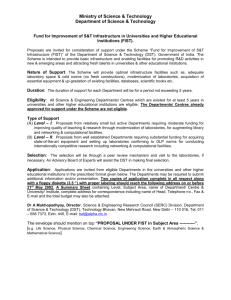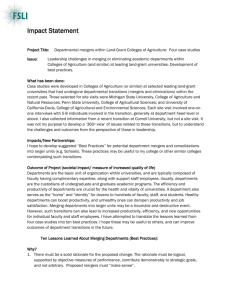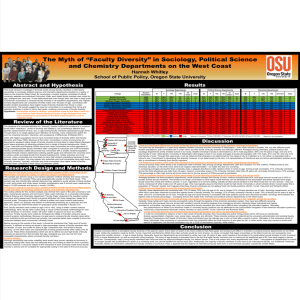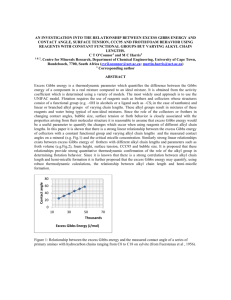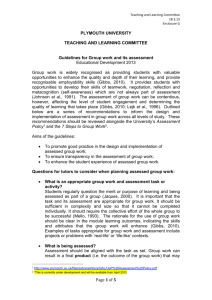Disciplinary And Contextually Appropriate Approaches To
advertisement
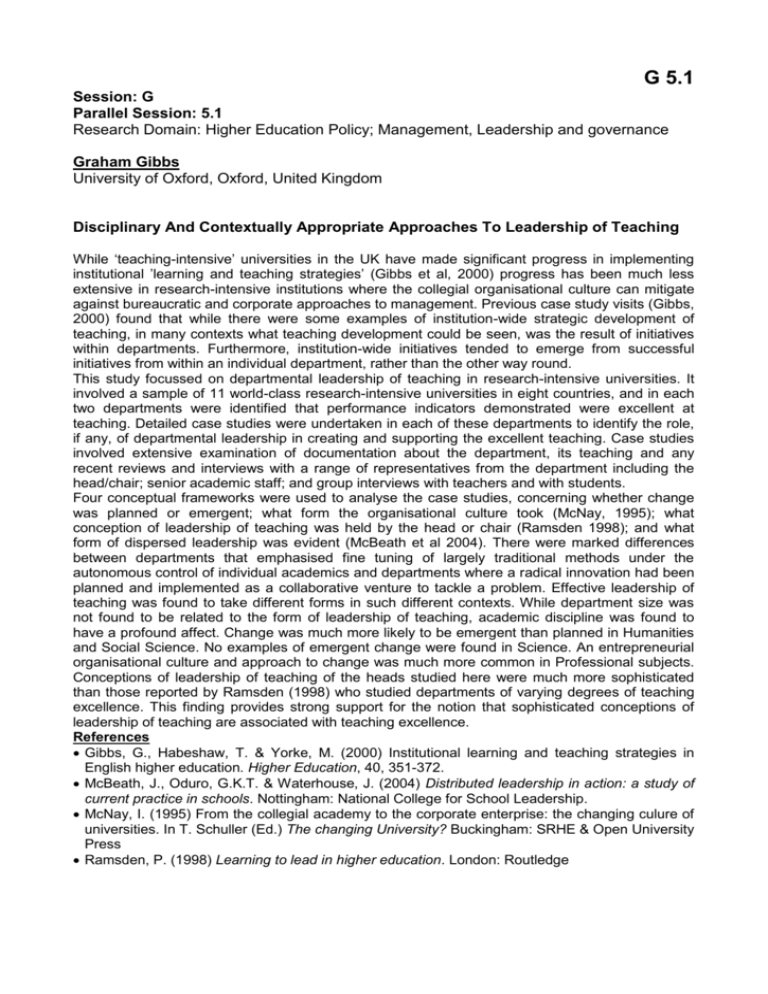
G 5.1 Session: G Parallel Session: 5.1 Research Domain: Higher Education Policy; Management, Leadership and governance Graham Gibbs University of Oxford, Oxford, United Kingdom Disciplinary And Contextually Appropriate Approaches To Leadership of Teaching While ‘teaching-intensive’ universities in the UK have made significant progress in implementing institutional ’learning and teaching strategies’ (Gibbs et al, 2000) progress has been much less extensive in research-intensive institutions where the collegial organisational culture can mitigate against bureaucratic and corporate approaches to management. Previous case study visits (Gibbs, 2000) found that while there were some examples of institution-wide strategic development of teaching, in many contexts what teaching development could be seen, was the result of initiatives within departments. Furthermore, institution-wide initiatives tended to emerge from successful initiatives from within an individual department, rather than the other way round. This study focussed on departmental leadership of teaching in research-intensive universities. It involved a sample of 11 world-class research-intensive universities in eight countries, and in each two departments were identified that performance indicators demonstrated were excellent at teaching. Detailed case studies were undertaken in each of these departments to identify the role, if any, of departmental leadership in creating and supporting the excellent teaching. Case studies involved extensive examination of documentation about the department, its teaching and any recent reviews and interviews with a range of representatives from the department including the head/chair; senior academic staff; and group interviews with teachers and with students. Four conceptual frameworks were used to analyse the case studies, concerning whether change was planned or emergent; what form the organisational culture took (McNay, 1995); what conception of leadership of teaching was held by the head or chair (Ramsden 1998); and what form of dispersed leadership was evident (McBeath et al 2004). There were marked differences between departments that emphasised fine tuning of largely traditional methods under the autonomous control of individual academics and departments where a radical innovation had been planned and implemented as a collaborative venture to tackle a problem. Effective leadership of teaching was found to take different forms in such different contexts. While department size was not found to be related to the form of leadership of teaching, academic discipline was found to have a profound affect. Change was much more likely to be emergent than planned in Humanities and Social Science. No examples of emergent change were found in Science. An entrepreneurial organisational culture and approach to change was much more common in Professional subjects. Conceptions of leadership of teaching of the heads studied here were much more sophisticated than those reported by Ramsden (1998) who studied departments of varying degrees of teaching excellence. This finding provides strong support for the notion that sophisticated conceptions of leadership of teaching are associated with teaching excellence. References Gibbs, G., Habeshaw, T. & Yorke, M. (2000) Institutional learning and teaching strategies in English higher education. Higher Education, 40, 351-372. McBeath, J., Oduro, G.K.T. & Waterhouse, J. (2004) Distributed leadership in action: a study of current practice in schools. Nottingham: National College for School Leadership. McNay, I. (1995) From the collegial academy to the corporate enterprise: the changing culure of universities. In T. Schuller (Ed.) The changing University? Buckingham: SRHE & Open University Press Ramsden, P. (1998) Learning to lead in higher education. London: Routledge




